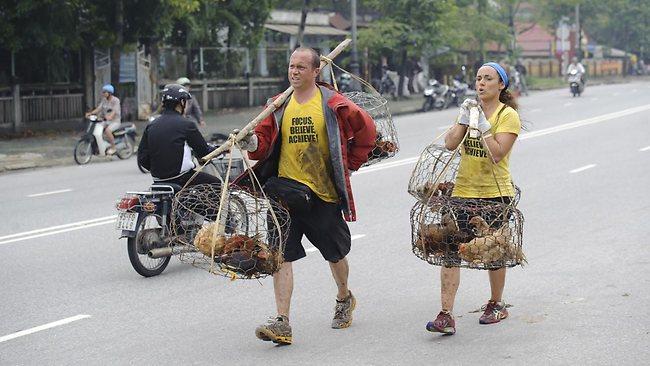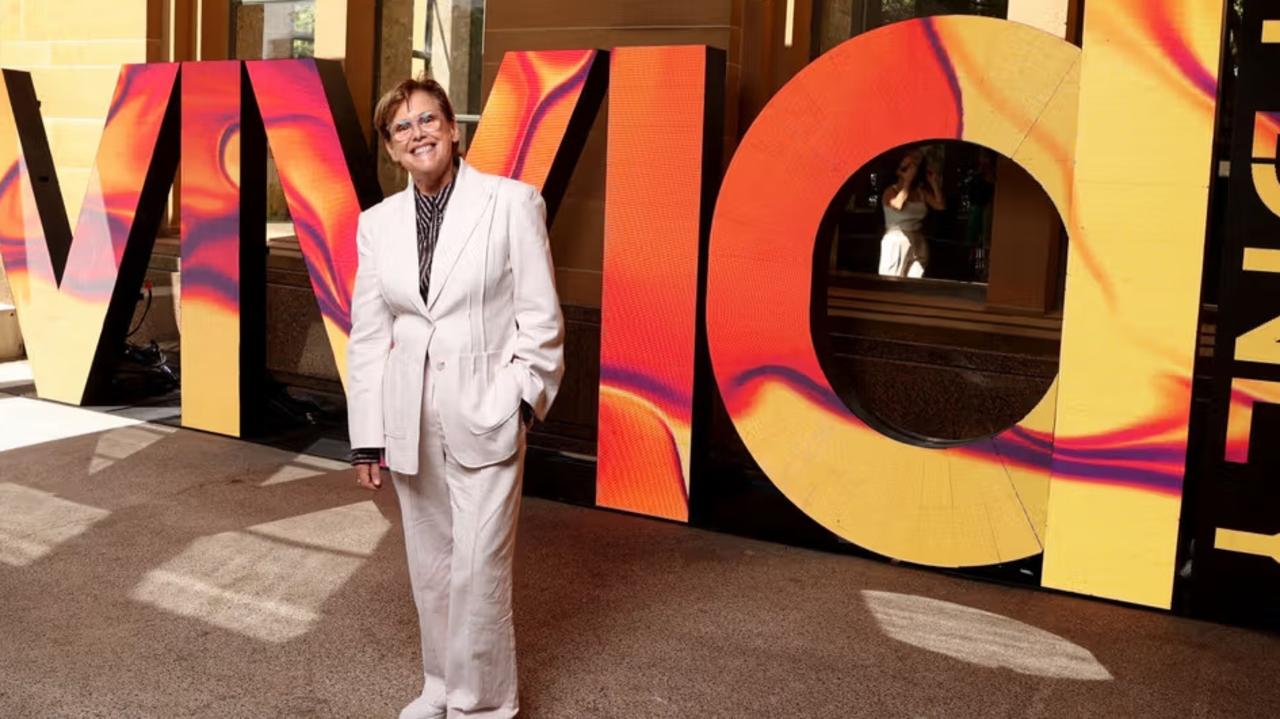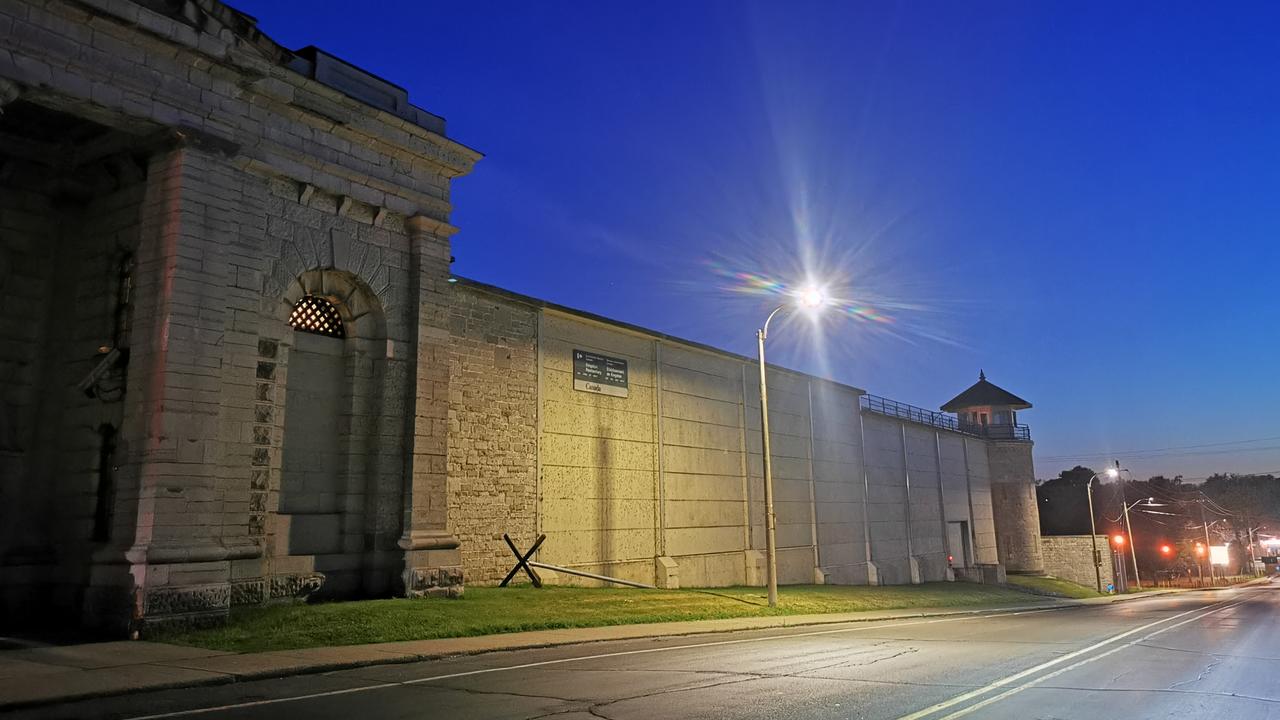Cut copy
FORMAT wars are where it's at in TV production, with huge profits up for grabs.

THE year's big new shows have finally arrived -- Angry Boys, Cloudstreet, Downton Abbey, The Kennedys, Paper Giants, Small Time Gangster -- and Nine's surprise documentary hit In Their Footsteps. Some of them still have pleasurable episodes in store but, happily, this time of the year is no television viewer's winter of discontent as they finish up.
The familiar, localised, monster international TV reality shows have returned, providing an entertaining study in how the globalisation of TV formats is advancing and how these programs rule the TV landscape.
In some cases the parent shows are also being broadcast (on pay-TV especially), so fans can ration out some discretionary viewing by critically observing the flexibility employed as far as the choice and arrangement of elements in the adaptation is concerned.
It's great fun, for example, comparing the use of the voiceover narration in the English and Australian versions of that brilliant, often hysterical reality cooking show Come Dine with Me, or jeering at the stodgy, sweaty presenters of the long-running British MasterChef, which appears like TV from a parallel universe compared with the local juggernaut.
Formats of all kinds -- not just reality shows -- were once a genre held in low esteem, but these days their adaptation is rarely a simple, facile repetition of the original. Some, such as MasterChef, are brilliantly re-imagined (a beloved expression in format land) and others, such as Dancing with the Stars and SBS's surprising Letters and Numbers (not a reality show but a fascinating and successful adaptation in its own right), are more subtly altered, their aesthetic components artfully nudged to cater to the local market.
Interestingly two of the critically applauded new shows, the British blockbuster drama Downton Abbey and formatted doco series In Their Footsteps, hybridise other formats quite shamelessly, seemingly with the blessing of the original copyright holders.
Downton Abbey is a clever reworking of Robert Altman's movie Gosford Park and the hit 1970s British series Upstairs, Downstairs. And In Their Footsteps, part reality-style personal journey and part military history, is highly reminiscent of SBS's enlightening exploration of genealogy, Who Do You Think You Are?
This, of course, is itself based on the original hugely successful BBC series, which has been increasingly popular since 2004 when it first aired in Britain. There are versions in Canada, Ireland, Sweden, South Africa and a gushy American adaptation, produced by former Friends star Lisa Kudrow.
When I asked the Australian producer Celia Tate about the similarities she simply laughed and wished the Nine show luck.
"I envy their ratings; if Channel Nine took our show I reckon we'd rate around the 1 1/2 million," she said a little wistfully.
"Formats are tradable intellectual property, although the legal enforceability of the shape and content of a television program is pretty shaky -- think of Backyard Blitz gazumping Ground Force," says Frances Bonner, who lectures in film and TV at the University of Queensland. Many threats of legal action have been made, Bonner points out, and very, very few cases have been brought, let alone won, given the problematic nature of actually proving infringements.
"The trade in formats is a very large one and some of the most popular shows of the last decade or two have been made as a result," she says. Most have originated from Britain, their export significantly bolstering the national economy recently, with London the headquarters for many large global production companies, including All3Media, Shine, Fremantle and Celador.
"Usually what a purchaser gets is rights to a name and a 'bible' -- a document providing details of the show, not just its structure and copies of programs but also demographics on audiences, what to look for in personnel; how to make the show, in effect," Bonner adds. It is believed this information is what makes it worth paying for rather than ripping it off, though of course both occur.
"Generally a format is effectively providing a broadcaster with the ability to make the program; yes, they could copy the program, but they run the risk of getting it wrong and wasting their time and money," says Michael Hirsh of Working Dog, producers of the improvisational comedy format Thank God You're Here, shown in Australia on Ten and now sold in 20 countries.
"It's easier to purchase the format and you have the real deal. Creating programs is painful and takes time; a format can be the magic pill for a broadcaster," Hirsh continues. "I have a theory that if you just copy
a program you don't know why things happen and understand the program, therefore your copy program will not survive in the medium to long term," he suggests.
Format is an odd term -- Latin in derivation, it had its beginnings in the printing industry -- that suggests more than anything else an industrial connotation: something that can be copied. A format is the basis for something new, but which is still basically the same. But these days everyone in TV spends waking nights either dreaming new ones up or devising ingenious ways of adapting what is already successful.
Once people talked ideas; now they write formats, flooding the network programmers with endless suggestions for combinations of games, quizzes, cooking shows, renovation and makeover series all dressed up in the conventions of reality TV or observational documentary. (Pay-TV's Lifestyle Food channel has just commissioned an eight-part series to take us behind the doors of Australian bakery Planet Cake in the hope of emulating the globally successful Cake Boss and Ace of Cakes.)
"A successful format is the holy grail for production companies and for networks," says Vincent Beasley, executive producer for entertainment at SBS, who looks after formats such as RocKwiz, Letters and Numbers and Who Do You Think You Are, important and popular shows for the public broadcaster.
"If you want to make money, it's the best way because as a production company you can sell the product around the world and continue to make money from it; and for networks they can look on the shelf and find a product that's been tried and tested and [they] don't have to take any real risk."
Of course local adaptations of international shows have sometimes proved to be elephant's graveyards in the recent past, some formats dying almost as fast as they arrived in town. Taken Out, Iron Chef Australia, Survivor Australia and the first series of The X Factor were among them.
Then there was the Australian Queer Eye; and with deep sleep therapy you might just recall Ten's game show The Con Test, hosted by Andrew G and the sassy, lippy Brigitte Duclos, which was a weird cross between a quiz and poker. But generally the successful formats dominate our TV, the latest being Seven's thoughtfully produced The Amazing Race Australia, a hit after only a few weeks.
The original Emmy-winning show has been around since 2001 as reality TV's version of Around the World in 80 Days. Now airing on Seven's digital channel 7mate, it's worth an occasional look for an entertaining comparison. This warhorse from executive producers Jerry Bruckheimer and Bert van Munster has proved to be among the most durable of reality formats.
It's always been a series that hates slowing down, or even changing gears too often, as its teams of drivers head off each year on the latest madcap cross-country adventure, though they must be running out of continents to terrify.
The local version, with its high-end production values and engaging larger-than-life cast, surprised me and should attract a completely new audience without disappointing fans of the American version.
Like the original, it's a slickly produced, lavish and technically mind-boggling combination of global travelogue, on-the-road thrills and interpersonal sitcom.
(The original show's director of photography, Per Larsson, acted as hands-on-producer for its creators during Seven's pre-production, ensuring they got the multiple camera aesthetic right.)
There's also an entertaining touch of psychodrama in the dynamics of group interaction and the local producers have adopted all the Bruckheimer trademarks: rapid-fire editing, streamlined stories and slick action. It's less brutally competitive and abrasive than the original, though, and some of the couples are genuinely amusing in a rough diamond, look-I'm-on-TV kind of way.
The nice touches of psychodrama make it often absorbing in that TV reality way and, as always, it's easy to find a team to identify with and barrack for, and at least one carload of idiots to detest.
As you would expect from a Bruckheimer show (he also produces the CSI franchise), Amazing Race's producers are creative, building challenges that take into account where these contestants are and the people and culture around them. They all face the show's famous devices: roadblocks, detours, intersections, fast forwards, yields and speed bumps, involving weird tasks.
Mastering them requires some degree of calculation, riddle and puzzle solving and some familiarity with the landmarks and cultures of the countries they traverse. Part of the show's schtick, though, is the way these obstructions can cause wonderful comedy from a bunch of Australians who know little about the rest of the world. There's a similar serious cringe comedy of embarrassment when our contestants treat the locals with a level of condescension that would make even Chris Lilley blush.
It's a sign of the increasing structural maturity of our TV that we no longer need to follow slavishly the conventions of overseas-conceived formats but generally can work in collaboration with the creators.
Local production is now so successful that, to some extent, all formats have to be originalised. They simply would not work without a high degree of creative local input.
TV is increasingly global, framed and structured by international contexts. The critic Meaghan Morris once called this a kind of "positive unoriginality" and it's nothing to be ashamed of these days.
Successful producers say it's a little like McDonald's or Starbucks. The trick is to extract the integrity of the original show and dress it with the idiosyncrasies and colour of local culture, somehow giving it the right spin to make it feel home-grown and natural.
It may be, as Bonner suggests, as simple as the selection of the contestants and presenters and the stereotypes or cultural specifics they represent. Or it may be in the way a new vision and structure is somehow grafted on to the original format, as happened so magically in MasterChef.
I can still remember sitting with Ten's programming boss David Mott outside the first rowdy press launch two years ago. We were in the garden of the show's "hero location", the cavernous MasterChef kitchen in Sydney's Alexandria, in which the 20 finalists, survivors of an epic audition process, were cooking off the party food.
"There is simply nothing more exciting than watching people chase their dream," the voluble executive kept saying and, without a sign of anxiety, managed to use the word "upscale" in a bewildering variety of grammatical configurations.
"This is positive upscale TV, upscaling the original show into something, well, really upscale," he said. He gave me the feeling that Ten believed TV was reinventing itself by infusing this old cooking format with the confessional staples of reality TV, that it was a kind of therapy for the beleaguered nation. And of course he was right.
These formatted shows, originally from somewhere else, are entertaining in the cathartic sense and have many Australians deeply involved in their outcomes and what happens to their characters.
They construct highly detailed, often fantastic, narrative worlds for their characters and an almost science fiction landscape full of larger-than-life beings, a whole universe of the mind.
But who knows if any of it is actually real.
The Amazing Race Australia, Monday, 8.30, Seven


